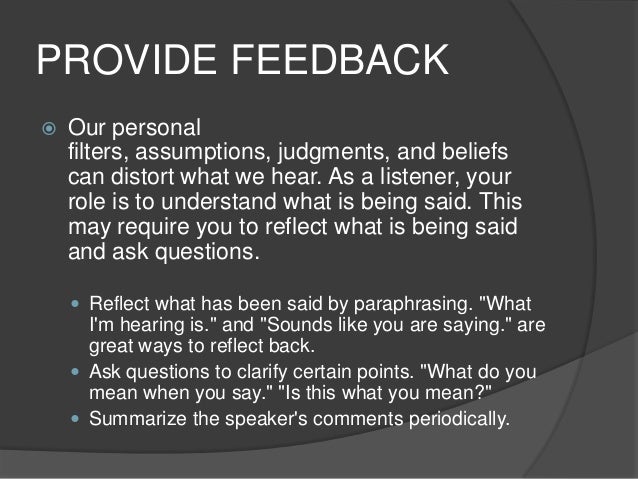
- #Active listening definition in education how to
- #Active listening definition in education download
Related: 10 Best Skills To Include on a Resume What is active listening?Īctive listening is the ability to focus completely on a speaker, understand their message, comprehend the information and respond thoughtfully.

In this article, we discuss active listening skills, why they’re important and how you can improve your active listening skills. Developing this soft skill will help you build and maintain relationships,solve problems, improve processes and retain information, such as instructions, procedures and expectations. One of the most critical skills in effective communication is active listening. Paraphrase - Ask open-ended questions - Ask specific probing questions - Use short verbal affirmations - Display empathy - Share similar experiences - Recall previously shared information - Nod - Smile - Avoid distracting movements - Maintain eye contact Learn more about USIP’s resources for students and educators.Two people sit talking while working on laptop computers underneath a list with the title "Active Listening Skills To Practice" and these skills:
How can active listening help you resolve conflicts?Īdapted from Exercise 4.2.1, Creating a Culture of Peace in the English Language Classroom by Alison Milofsky (United States Institute of Peace). What made this activity challenging for you?. What did it feel like to really be listened to without being interrupted?. How did you know that your partner was listening to you?. Lead a class discussion using some or all of the following questions:. Share with your partner the qualities of a ally. Share with your partner a conflict you successfully resolved. Share with your partner a time you made an assumption about someone and you were proven wrong. Share with your partner an experience when you thought someone made assumptions about you. After two minutes have the partners switch roles. Instruct students to use active listening skills when they are not speaking. Have each student speak for two minutes on the following topics (or on other topics which you think are relevant). Ask the class which skills they observed in the demonstration. Have the student talk about their favorite holiday. Do the demonstration again this time using the active listening skills the class has suggested. After you have generated two lists, you may want to review the handout Core Principles of Active Listening or It’s Easier for Others to Talk When I…. You may want to use a t-chart (see below). Write these on the board, separating the verbal and non-verbal skills. #Active listening definition in education how to
Ask students for examples of how to be a good listener.
Explain to the class that good listening requires active participation. Ask the class what listening skills, good or bad, that they observed. At the end of the conversation, ask the student how he or she felt while they were talking. When the one student starts to speak, the other student will start exhibiting good listening skills (nod, smile, show concern, or encouragement). Scenario 2: Demonstrating good listening skillsĪsk one student to talk about what he/she did over the weekend. When the one student starts to speak, the other student will start exhibiting poor listening skills (look at your watch, interrupt, avoid eye contact, look bored or impatient, tap your foot or fidget). Scenario 1: Demonstrating poor listening skillsĪsk one student to talk about what he/she did over the weekend. Tell students to observe you in the conversation. Ask two pairs of students to demonstrate for the class both poor and good listening skills. Examples: getting directions, helping a person, learning about someone, listening to music for entertainment, etc…. Ask students for situations that require listening. Asking open-ended questions like, “What happened? How did you feel about that?”. Interested silence giving a person time to respond. Letting the other person finish what he or she is saying without interruption. Eye contact focusing on the other person. #Active listening definition in education download
Materials: Core Principles of Active Listening Handout ( Download PDF - Requires free Adobe Reader) To explore the role of active listening in managing conflicts.To examine and practice active listening skills.This lesson gives students the opportunity to identify what active listening is and why it is important in managing conflicts. It is an important first step to defuse the situation and seek solutions to problems. Active listening is a way of listening and responding to another person that improves mutual understanding.

Rationale: Effective communication consists of both speaking and listening.






 0 kommentar(er)
0 kommentar(er)
